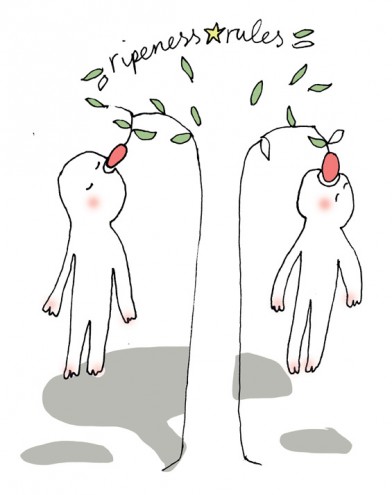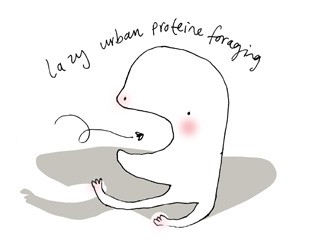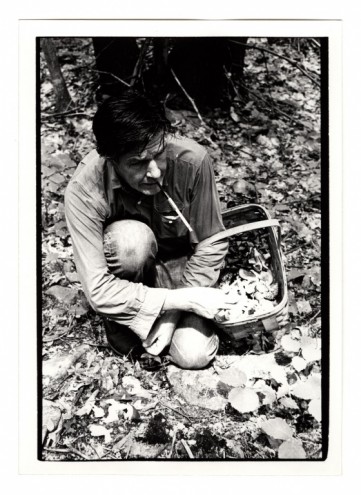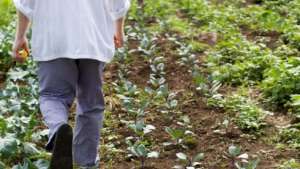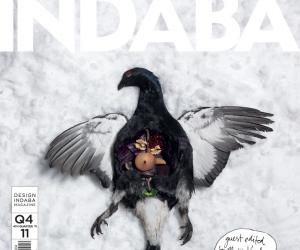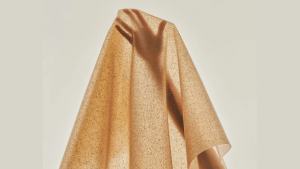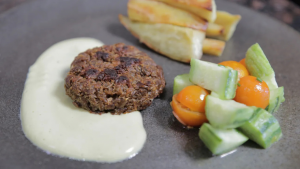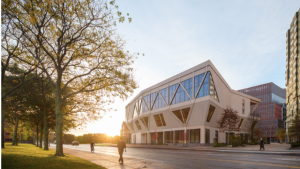From the Series
First Published in
At one o’clock on a rainy spring day, Steve Brill is meeting a group of strangers in Grand Army Plaza, the entrance to Prospect Park in the Park Slope neighbourhood of Brooklyn. Brill is devoted to higher education about nature, leading tours in community parks and preserved areas in New York City and further afield in the surrounding counties. More specifically, his focus is on edible plants and he encourages tour goers to experience the journey by tasting.
Also known as “The Wildman”, a foraging trip with Brill consists of four basic elements: The plants, the jokes, the journey and the iPad. A fifth might be the bags he recommends you bring to take home any found treasures. Surprisingly, it is the iPad that really enhances the experience of nature, local food and community by offering quick appreciation of edible and medicinal wild plants and mushrooms. Having published several books on related topics and a recently released smartphone and tablet application called “Wild Edibles”, The Wildman is still innovative.
A pair of squirrels chase each other up a giant oak tree. Canada geese quack in the distance. It’s raining but, not discouraged, Brill marches through Prospect Park down a narrow path towards a fence. We follow. He steps over the fence with ease and those of us with appropriate footwear join him.
“Jackpot,” he says, without cracking a smile.
Together we pick giant oyster mushrooms that have grown up behind a large fallen tree. The sun struggles to peak down through the canopy of foliage and a monarch butterfly appears, drowning out complicated pleadings for the rain to cease.
“I’ll tell you the story of when I was arrested,” says Brill.
“My big break came at 4pm, 29 March 1986, when two undercover park rangers who had infiltrated a Central Park tour arrested and handcuffed me for eating a dandelion. The police fingerprinted me and charged me with criminal mischief for removing vegetation from the park, but I had eaten all the evidence. So they released me with a desk-appearance ticket pending trial.”
Laughter and awe from the group. I clutched the mushrooms and felt unreasonably pleased with myself. I wondered if John Cage ever had to thwart the cops.
While Brill may be the most well-known contemporary American foraging for wild foods today, he’s preceded by many before him, including Cage – musician, artist and one of the founders of the New York Mycological Society. Considered the father of experimental music, his interest in foraging is less known. Perhaps Cage did not want to bring attention to something that for him was a meditative experience?
These original artists and environmentalists of the 1970s left behind an awareness and appreciation of biodiversity that is now taking a new form in urban areas. The concept of a local “foodshed”, has entered our lexicon – speaking to where exactly our food is grown or processed. Foraging today also connects deeply to an extreme “locavore attitude”. We are beginning to question whether or not the flattening of our world really benefits the environment, public health and hunger issues. Alternatives like seasonal, locally produced foods and the knowledge to make the right choices are directly linked to a “Food Movement”.
While Cage’s metaphysical exploration of foraging connects to his artistic endeavours, as a child in Carmel, California, during the Great Depression, his foraging was for sustenance. And, Cage supplied mushrooms to New York City’s iconic Four Seasons, a white tablecloth restaurant, turning his act into a business pursuit. It is no wonder Cage was guarded about his foraging: He cites Henry David Thoreau as the inspiration for his pursuits but, a celebrated pioneer among environmentalists today, Thoreau spoke out against environmental exploitation for profit.
The conversation between the personal, the artistic and the business of food also deserves further exploration. The current generation of chefs is growing their own food, foraging and partnering with small purveyors and artisans. Restaurant menus are beginning to highlight their ever-changing food sources. A discussion with a chef about taste can lead to talk of rejecting mass-produced feedlot poultry and lauding films like Food Inc. Meanwhile, a “food is fashion” mentality has inspired cookbooks bursting with images and recipes whose ingredients may not even be accessible to most readers.
At a recent visit to a Dutch-inspired restaurant called Vandaag in NYC’s East Village, the “foraged ginger” on the menu caught my attention. “The chef goes upstate once a week,” the server told me. I wondered if he had taken Brill’s foraging tour? Or was inspired by the current interest in Nordic cuisine that has been lauded for its location-inspired menu?
The notion of picking one’s own food, especially in urban areas, can seem absurd. Questions about foraging may seem rooted in epistemology – how did our current food system come to be? This interest in foraging may be a beautiful and artistic manifestation of some very important questions. And by looking to the past, can we provide answers for the future?
Ironically, after Brill was arrested, he was hired by the New York City Department of Parks. The knowledge he shares speaks to the passions of Cage and Thoreau. If not for Brill, it could be lost.
Based in Brooklyn, New York, Elizabeth Thacker Jones curates and produces food culture happenings that address global food system issues. Website: www.elizabeththackerjones.com. Twitter: @elizabethtjones


